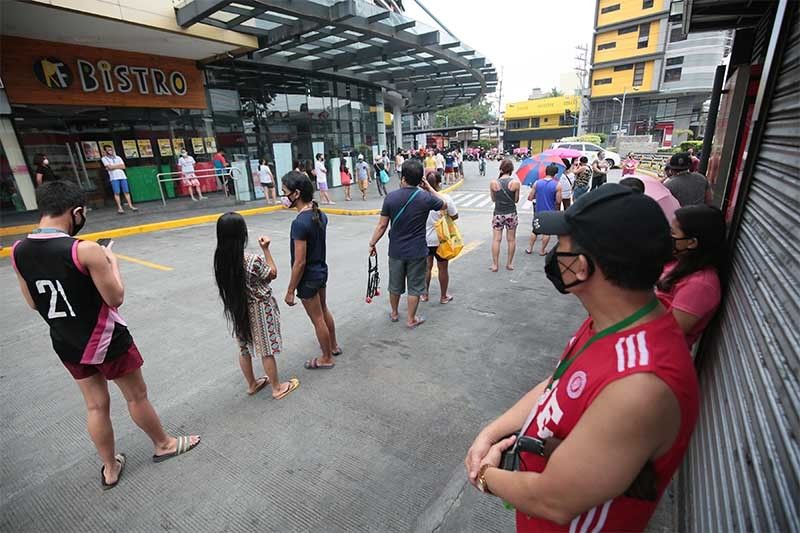Month-long quarantine period eyed

MANILA, Philippines (UPDATE 1 5:24 p.m., Aug. 31) — Cabinet members are considering recommending month-long quarantine periods, instead of 15-day controls, to President Rodrigo Duterte, a possibility welcomed by businesses prevented from making long-term plans by ever-changing restrictions.
“There is an ongoing IATF (meeting) now. Definitely, we’re looking for a longer term period of quarantine. In other words, it may no longer be just 14 days, it may be one month duration,” Trade Secretary Ramon Lopez said on the Laging Handa briefing early in the morning.
Duterte is set to announce new quarantine classifications for the entire archipelago Monday evening, during which he is expected to retain Metro Manila, Calabarzon region and other neighboring areas under general community quarantine (GCQ), while the rest would be placed on a looser modified GCQ.
Areas under any forms of GCQ are allowed to reopen most enterprises at 50% of their typical capacity, and Lopez, in the briefing, indicated more loosening ahead starting Tuesday when gyms, testing centers and grooming services would be allowed to go back to business, following strict health protocols.
But at a broader level, business groups have been looking for more leeway from the government to revive an ailing economy, one of which is a longer period for quarantines, the changing characteristic of which have forced firms, suffering dwindling earnings, to look more in the short-term.
“There is nothing to plan for in two weeks’ time,” Sergio Ortiz-Luis, president of Philippine Employers Confederation Inc., an industry group, said in a phone interview.
“It is good for planning, but in some cases, it also takes away the flexibility supposing that after 15 days you see some improvement,” he added.
Steven Cua, president of Philippine Amalgamated Supermarkets Association, another industry group, also supports enforcing 30-day quarantines. “Monthly adjustments definitely better than every 2 weeks. Businesses need stability in both economic condition and regulation to plan and strategize,” he said in a text message.
Too long?
For his part, Ebb Hinchliffe, executive director at American Chamber of Commerce, said month-long adjustments may be "too long" if burned out health workers will be considered. Instead, he suggested retaining the current system while having "a week" of stringent lockdowns "on a rotational basis." "Maybe Makati for a week. Then Pasig, the QC (Quezon City)," Hinchliffe said in a text message.
Save from Aug. 4 to Aug. 18 when medical front-liners asked for a “time off,” Metro Manila and neighboring urban areas had been under GCQ since June, when the government started shifting priorities from just trying to control the spread of coronavirus disease-2019 (COVID-19) to juggling an open economy with health considerations.
The result of the strategy has so far been unconvincing. Not only have COVID-19 cases shot back up, daily deaths in the past week have accelerated. As of Sunday afternoon, the Philippines has the most number of infections in Southeast Asia at 217,396, with 3,520 deaths and 157,403 recoveries.
Ultimately, Ortiz-Luis said no amount— or length— of quarantine controls can replace addressing mobility challenges that have prevented employees from reporting to work.
“They cannot solve the public transportation problem in 15 days. They cannot solve the lack of quarantine facilities in 15 days… What is the point in opening up further if they cannot solve these problems,” he pointed out.
“If say, you open up more and extend it to 30 days yet public transport is still not enough to bring workers or customers, then what’s the point of additional space?” Ortiz-Luis said. — with Prinz Magtulis
Editor's Note: Added Steven Cua's comments.
- Latest
- Trending


































